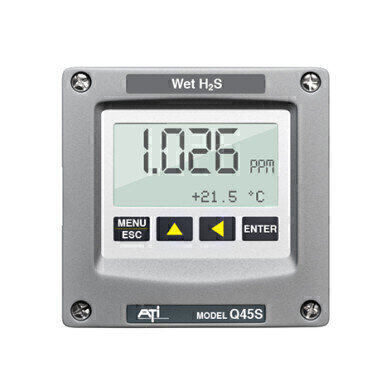Water/wastewater
Odour control solutions in wastewater
Nov 06 2020
In the modern world of wastewater treatment, control of odours has moved from an afterthought to a primary design consideration. As communities become less tolerant of nuisance odours, wastewater professionals are now more motivated to prioritise new, reliable and effective methods to address odour control.
There is growing pressure from regulatory bodies such as OFWAT and the EA in the UK to clamp down on poor odour control from wastewater sites, both in utilities and privately owned manufacturers such as dairies, meat, food processing and beverage production.
For facilities with limited budgets, measuring H2S in biological and chemical scrubbers can often be too expensive. However new methods of monitoring H2S now cost-effectively overcome the issues associated with hydrogen sulphide measurement.
ATi’s Q45S Wet Sensor for inlet and outlet protection on scrubbers allows true control of the dosing systems and accurate, continuous monitoring of sulphide levels, offering a complete solution to combating odour problems before they become an odour complaint.
This new type of gas sensor technology is designed to work in wet stack environments, directly inserted in the duct on both the inlet and outlet, alarming when the system requires maintenance. The direct measurement also eliminates any dilution of the gas prior to measurement. Capable of monitoring H2S in gas streams with condensing levels of water vapour, there is an automatic system for purging compressed air from an integrated source, helping to improve accuracy as it reduces any fouling that sits on the membrane, which could reduce the accuracy of the measurement. The Q45S ensures a clear gas diffusion path to the sensor and reliable measurements on a continuous basis.
A special battery-powered version of the Q45S is also available for use in temporary installations and data is easily downloaded to a PC using software supplied with the unit. This system runs on an internal nine-volt battery that will operate the unit for four days, while a nine-volt lithium battery will provide around 10 days of operation.
The Q45S provides an advanced method for effective control of the dosing system and accurate, cost-efficient and reliable measurements of H2S in waste water, providing optimal analytical sensitivity.
Digital Edition
AET 28.4 Oct/Nov 2024
November 2024
Gas Detection - Go from lagging to leading: why investment in gas detection makes sense Air Monitoring - Swirl and vortex meters will aid green hydrogen production - Beyond the Stack: Emi...
View all digital editions
Events
Jan 12 2025 Abu Dhabi, UAE
Jan 14 2025 Abu Dhabi, UAE
Jan 20 2025 San Diego, CA, USA
Carrefour des Gestions Locales de L'eau
Jan 22 2025 Rennes, France
Safety, Health & Wellbeing LIVE
Jan 22 2025 Manchester, UK



















